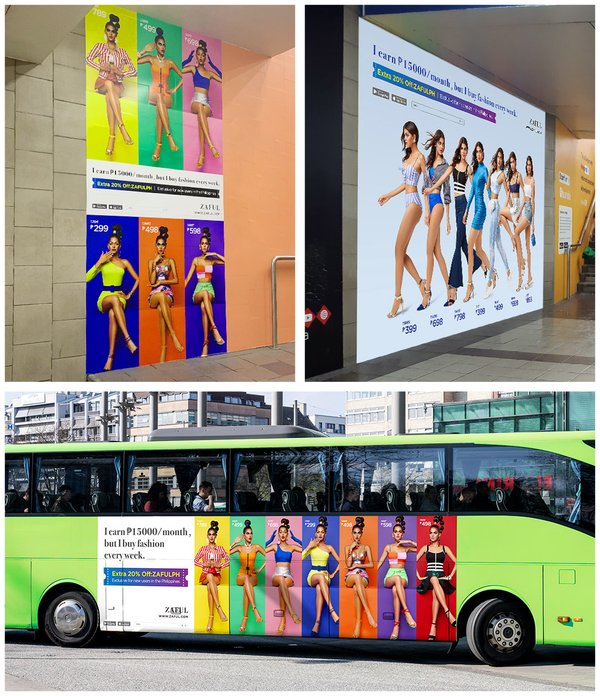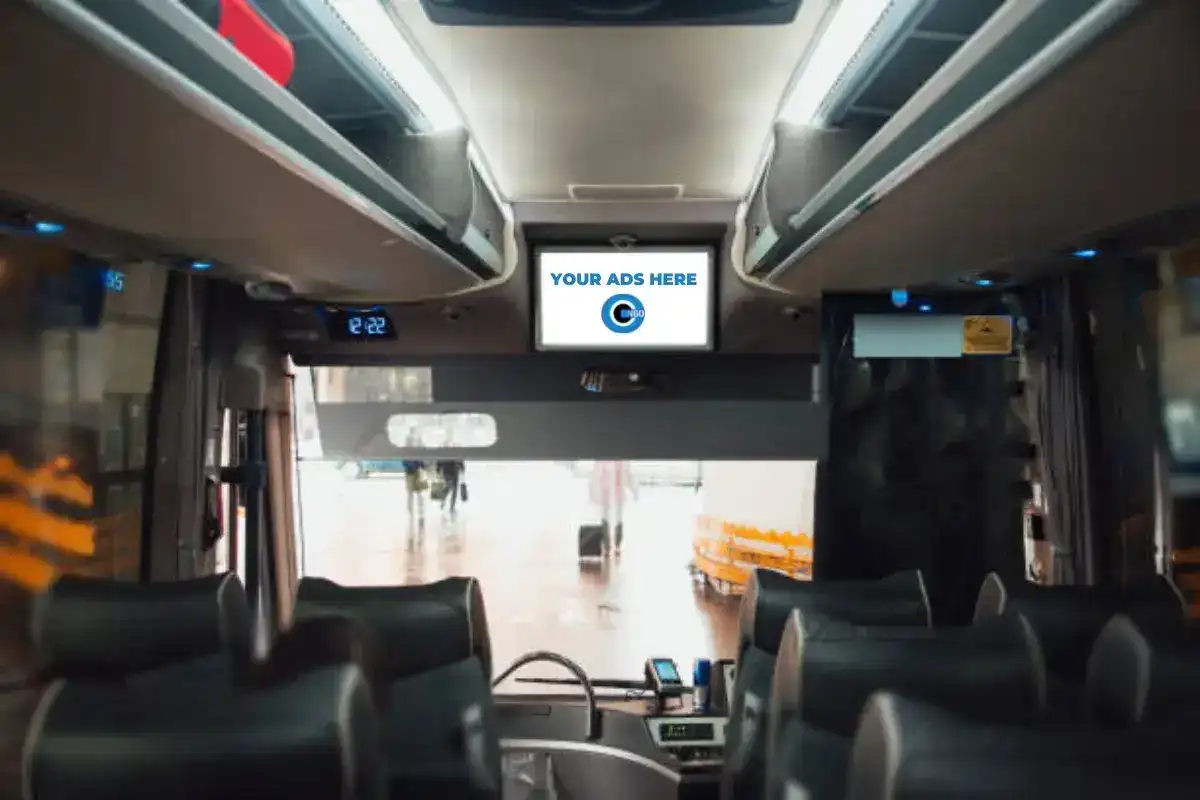Transit Advertising Philippines: Reach Thousands of Commuters Daily
An In-depth Examination of the Approaches and Techniques for Effective Transit Advertising Campaigns
Transportation advertising campaigns provide an one-of-a-kind opportunity for brands to involve with diverse target markets in dynamic settings. As we check out these essential elements, it becomes clear that the path to an impactful transit advertising and marketing technique is both intricate and rewarding, elevating the inquiry of just how finest to navigate these intricacies for optimal brand name exposure.
Understanding Target Demographics
Understanding target demographics is critical for the success of transit ad campaign (Transit Advertising Philippines). Identifying specific audience sectors enables marketers to customize their messages effectively, making certain that the web content reverberates with the designated viewers. This method boosts involvement and makes the most of roi
To efficiently examine target demographics, marketing experts have to think about numerous essential factors, including age, earnings way of life, line of work, and level preferences. For example, a project focused on young experts might concentrate on comfort and modernity, while one targeting households might emphasize safety and reliability. In addition, geographic elements such as city versus country settings can substantially affect consumer actions and preferences.
Data collection approaches such as studies, focus teams, and social media analytics provide useful understandings into demographic patterns and consumer habits. By leveraging this details, advertisers can craft compelling stories that line up with the values and needs of their target audience.
Ultimately, comprehending target demographics not just notifies the tactical instructions of transportation ad campaign but also makes sure that sources are alloted effectively. This targeted technique enhances the possibility of attaining project purposes, cultivating brand name loyalty, and driving conversions.
Innovative Design Strategies
Reliable communication with target demographics relies heavily on cutting-edge imaginative design techniques in transit advertising and marketing projects. To effectively capture focus in a jampacked aesthetic atmosphere, designers must focus on clearness and aesthetic influence. Making use of high-contrast elements and bold colors can enhance exposure, making certain that messages are quickly clear from a distance.
Incorporating vibrant images that reverberates with the target audience is vital. Aesthetic storytelling methods can evoke emotions and create unforgettable associations with the brand name. In addition, calculated use typography assists share crucial info promptly; legible font styles and proper dimensions additionally improve readability.
Including interactive components, such as QR codes or augmented reality functions, can involve travelers past easy monitoring (Transit Advertising Philippines). These strategies not just advertise customer communication yet additionally link the gap between conventional advertising and marketing and electronic engagement
Furthermore, making use of room artistically-- whether on bus covers, transportation shelters, or metro advertisements-- can cause innovative layouts that damage the mold and mildew of standard marketing. By welcoming creative creativity while maintaining brand consistency, projects can cultivate a solid link with their target market, ultimately driving both awareness and action. The assimilation of these design strategies is paramount for accomplishing successful transit marketing end results.
Strategic Positioning Approaches
Optimizing the impact of transit advertising rests on critical positioning approaches that make sure optimum presence and interaction. Effective positioning includes understanding and assessing high-traffic areas passenger demographics to recognize the most advantageous places for ad display screens. For example, positioning ads near entryways and exits of transit vehicles can capture the interest of boarding and alighting travelers, therefore boosting exposure.
In addition, utilizing both indoor and outside surfaces of transit cars can dramatically widen reach. Exterior ads, noticeable throughout blog here commutes, engage pedestrians and other vehicle drivers, while interior ads target guests in a captive setting. In addition, putting advertisements en route hubs, such as bus terminals or train terminals, allows for enhanced impacts as travelers shift in between different modes of transportation.
Timing is additionally essential; aligning the campaign launch with peak travel durations maximizes audience engagement - Transit Advertising Philippines. Furthermore, leveraging digital displays en route environments can assist in dynamic web content, improving and providing real-time updates user communication. By utilizing these strategic placement techniques, marketers read what he said can ensure that their transit ad campaign attain optimal presence, resonate with the target audience, and ultimately drive desired results

Gauging Project Efficiency
To analyze the success of transportation advertising and marketing projects, it is necessary to employ a range of measurement techniques that provide insights into target market interaction and overall effectiveness. One key approach is using essential efficiency signs (KPIs), such as reach, impressions, and involvement rates, which measure the number of people checked out the ad and engaged with it.
Surveys and emphasis groups can also contribute in gauging customer understandings and recall, allowing marketers to understand the influence of their messaging. Furthermore, tracking website web traffic and social media sites involvement during and after the project assists measure straight responses to the marketing.
Another reliable strategy is making use of location-based analytics, which can offer information on foot website traffic around details transportation areas, providing understandings into whether the campaign efficiently captured the interest of travelers. Moreover, assessing sales data can disclose correlations between transit advertising and increased income, supplying concrete proof of a campaign's efficiency.
Study of Success
Understanding the efficiency of transportation marketing projects via measurement strategies lays the foundation for checking out real-world instances that highlight successful results. By utilizing geo-targeted digital ads and analytics, the brand determined a 30% boost in sales in regions where the wraps were prominently displayed, demonstrating the direct impact of transit advertising.
Another compelling example originates from a neighborhood not-for-profit company that launched a campaign on metro systems to promote a neighborhood occasion. The organization combined vibrant visuals with QR codes routing travelers to an enrollment web page. Post-campaign analysis revealed a 50% rise in occasion presence contrasted to the previous year. Using direct involvement with modern technology magnified the project's go to my blog reach and efficiency.

Verdict
In summary, effective transportation advertising campaigns demand a detailed technique that incorporates an understanding of target demographics, ingenious style techniques, and strategic positioning. Collectively, these techniques foster brand name existence and optimize the return on financial investment in transit marketing campaigns.
Understanding target demographics is important for the success of transportation advertising and marketing campaigns.Reliable communication with target demographics relies greatly on ingenious creative layout techniques in transit advertising and marketing campaigns. By employing these critical placement approaches, marketing experts can ensure that their transit advertising projects achieve maximum exposure, reverberate with the target audience, and eventually drive wanted end results.
Comprehending the efficiency of transportation advertising projects with dimension techniques lays the foundation for examining real-world examples that illustrate effective end results.In recap, effective transit advertising campaigns require an extensive strategy that incorporates an understanding of target demographics, ingenious style methods, and calculated positioning.